By Josh Palackal
Guantanamo Bay, one of the most well-known military prisons in the world, acts as a great case study for examining the intersection of carceral geographies and environmental injustices on an international scale.
A Brief History of the Guantanamo Bay Detention Camp
While the Guantanamo Bay naval base has existed since 1903, the associated military prison has been in use since January 11th of 2002. It was built to detain Muslim people suspected of terrorism as part of the “War on Terror.” Former President Bush chose to locate the prison in this area specifically due to the fact that it was not on U.S. soil. Because it is located in Cuba and not the United States, the U.S. government was able to argue that those contained within the prison walls were not entitled to rights under U.S. law. Specifically, habeas corpus rights which protect individuals against unlawful detention.
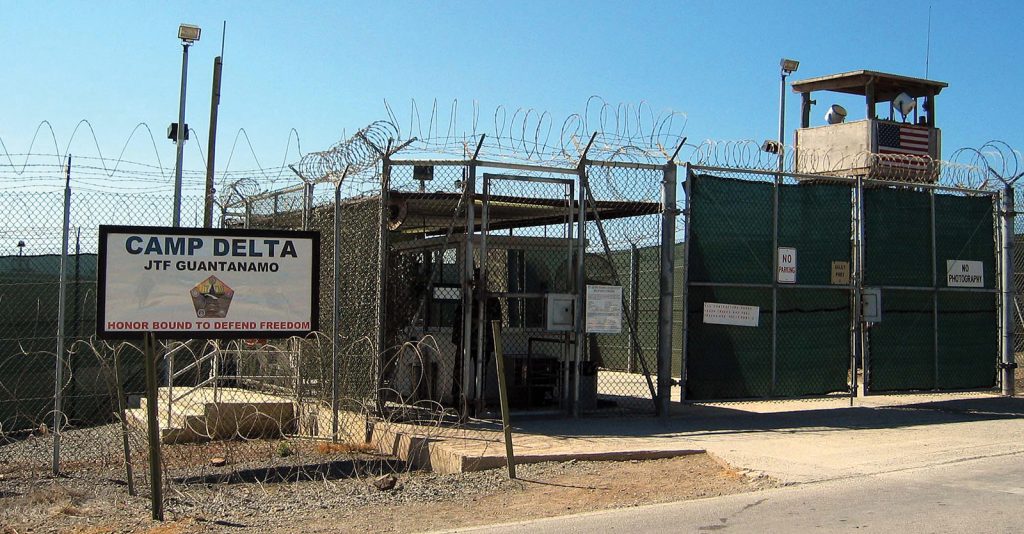
Today, there are approximately 39 inmates residing in Guantanamo Bay, with almost 800 people in total having been imprisoned since the military prison’s opening (nearly all without charge or trial). Despite numerous calls to close this facility, former President Trump pledged to expand the prison, and current President Biden has yet to take substantial action toward Guantanamo’s closure despite campaigning on closing the prison.
Guantanamo Bay as a Carceral Geography
Unsurprisingly, Guantanamo detainees are notoriously mistreated and subjected to human rights violations. This, in conjunction with efforts to quell resistance, solidifies Guantanamo Bay as a carceral geography.

Torture
There are a plethora of ways in which Guantanamo detainees are systematically tortured. This includes, but is not limited to
- Isolation (sometimes for up to 30 days)
- Up to 20 hours of non-stop interrogation
- Exposure to extreme temperatures
- Light and auditory deprivation
- Withholding of clothes and hygiene products
- Physical abuse by Initial Reaction Forces (IRF)
The use of torture has not only contributed to worsening physical conditions of detainees, but also the degradation of their mental health, as torture is associated with higher rates and vulnerabilities to stress disorders.
Improper Medical Care
According to various human rights experts, access to medical care in Guantanamo Bay is abysmal. There is a severe lack of medical resources in this institution. For example, coronary artery disease patients have been left untreated due to a lack of cardiovascular health resources in the prison. Torture rehabilitation is also non-existent.
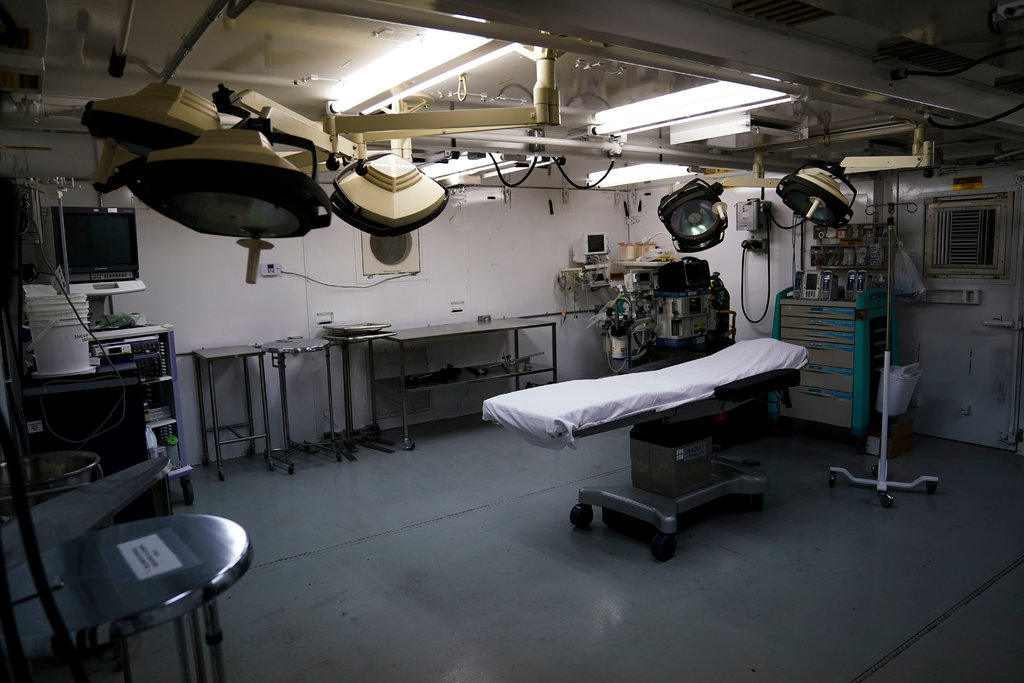
Prisoners are also subject to physical restraints during medical examinations. Abdul Latif Nasser, a Guantanamo detainee, has said that during his monthly medical appointments, he is forced to wear ankle restraints as well as a stomach brace with handcuffs attached to the waist. These inhumane practices and lack of proper resources greatly affect ill individuals within Guantanamo Bay, as well as the elderly population within this space, as elderly people are generally in need of more medical care and attention that they are not guaranteed in this prison environment.
Unjustified Incarceration & Court Date Delays
As mentioned previously, very few Guantanamo detainees are facing charges or have undergone trial. Since the prison’s opening in 2002, only 12 individuals have been charged with crimes, and only 2 have ever been convicted by Military Commissions. This is once again, out of nearly 800 total detainees over the course of 2 decades. Severe court delays are also prevalent. The trial of 5 individuals accused of having a part in the September 11th attacks has still not begun.
Force-Feeding
One of the most common forms of prisoner resistance and protest within Guantanamo Bay’s walls is hunger strikes. To combat this resistance, Guantanamo officials have taken to force-feeding as a means of silencing the prisoners. To perpetuate this, “feeding chairs” equipped with restraints have been created and utilized in the force-feeding process. Rather than listen to the prisoners and acknowledge their humanity, military officials have decided to commit more violence against them.
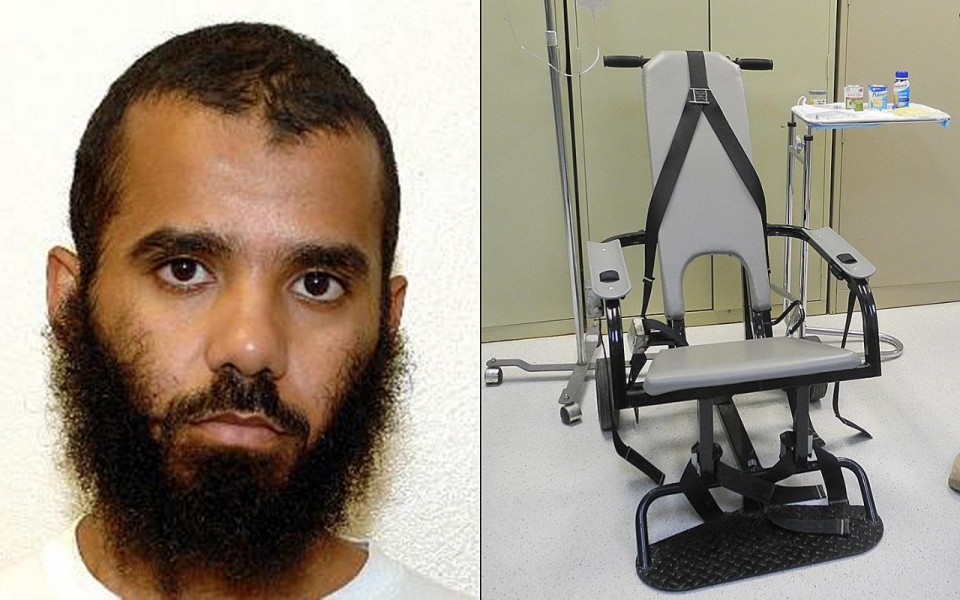
The use of torture, inadequate healthcare, over-incarceration, severe court delays for detainees, and committing violence against protesters all add substance to the fact that this site is a carceral geography by showcasing Guantanamo Bay as a space of confinement and state-sanctioned violence.
Guantanamo Bay as a Polluter
Guantanamo Bay acts as a polluting force in a variety of ways. This facility has perpetuated harm and damaged the well-being of the surrounding natural environment and nearby townspeople.
Carcinogens and Chemicals
In the court case Seeger Et Al v. U.S. Department of Defense Et Al, a group of lawyers filed a lawsuit against the Department of Defense because of the high presence of dangerous chemicals at Camp Justice, the area in which Guantanamo Bay military commissions are held. Among the list of chemicals that were found were airborne formaldehyde and other known carcinogens, or cancer-causing substances. They connected the presence of these substances to nine known cases of cancer within Camp personnel and alleged that the U.S. Navy’s investigation of the environmental hazards within the area was flawed. The prevalence of chemicals within Camp Justice has also been associated with cases of Thyroid issues and unusual body growths. Therefore, it is safe to say that Guantanamo Bay is a site of severe air pollution.
The Caimanera People
Caimanera is a Cuban town that is also the nearest town to the Guantanamo Bay military base. Because of the forced military occupation of Guantanamo, the people of Caimanera have been forcefully displaced. Many people have lost their jobs, homes, and general livelihoods because of the establishment of the Guantanamo Bay naval base. As a result, The Caimanera people have formed revolutionary groups that seek the closure of the naval base and have been engaging in anti-imperialist praxis and organizing for decades. This highlights Guantanamo Bay as a social polluter due to the harms perpetuated against the Cuban people, which span beyond the prison walls. Since this issue predates the building of the military prison, it goes to show the negative environmental impacts associated with military bases in general as opposed to just military prisons. The problem is the military itself, not just military prisons.
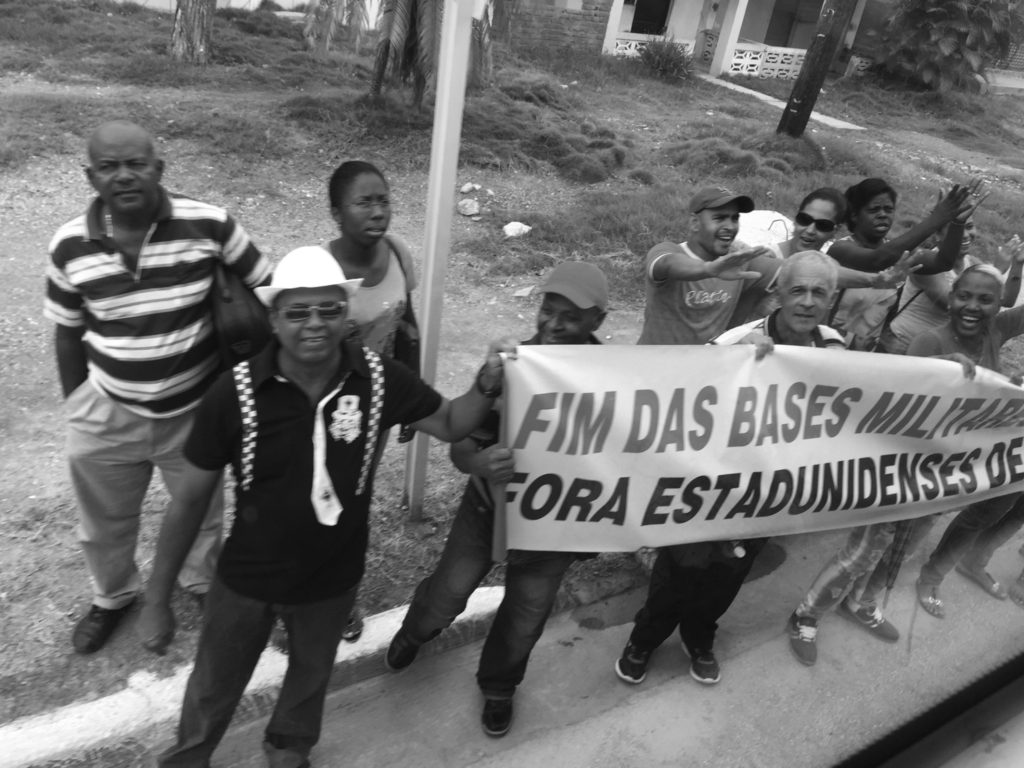
Coral Reefs
The natural pollution associated with Guantanamo Bay is not limited to the air. It also affects the surrounding land and water. Researchers have found that the nearby coral reefs have undergone severe stress due to influxes of sedimentation and land-based pollution perpetrated by the Base. The corals have also been harmed by direct sewage originating from the naval base.
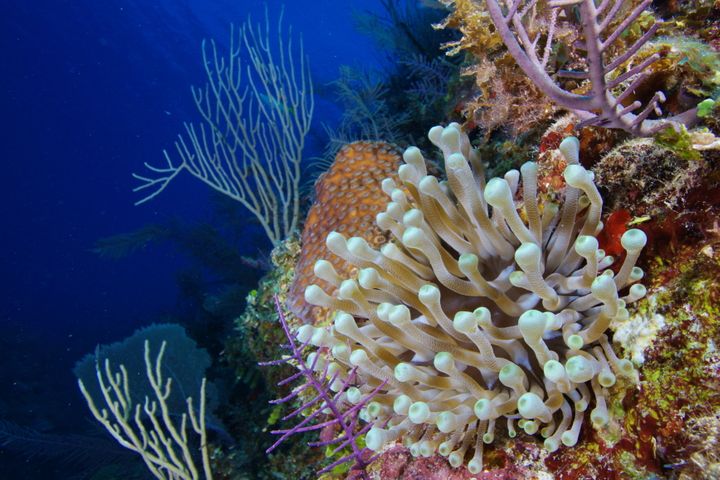
Looking at Guantanamo Bay from a humanitarian and environmental justice perspective, it is clear that this facility is a site of violence and environmental injustice. Therefore, it needs to be permanently closed, and the detainees safely returned home.
Abolitionist and Environmentally Just Counter-Terrorism
In order to move toward an abolitionist and environmental justice framework for dealing with terrorism, we must identify the roots of terrorism, establish policies that attack those roots, and what restorative justice looks like in situations of terrorism.
Roots of Terrorism
Capitalist imperialism is directly linked to instances of transnational terrorism. The violent taking of resources, such as oil, from global south countries that the United States military has committed directly, contributes to growing anger amongst the people of that nation. This is also perpetuated by growing American military presence in these countries, which has led to the murders of thousands of civilians across the globe. Imperialism has also created deteriorating socio-economic conditions within afflicted nations, which leaders of transitional terrorist groups have used as a basis for gaining field support. It is important to note that the vast majority of those labeled as “terrorists” are younger men from poor economies who are often unemployed or underemployed. Therefore, any efforts to combat transnational terrorism must come from anti-capitalist and anti-imperialist perspectives.
Humane, Substantive, Counter-Terrorism Policies
- Defunding and eventually abolishing the military-industrial-complex, thus lowering military presence in foreign countries and stunting capabilities for military violence
- Eliminating foreign and domestic military bases and prisons, such as Guantanamo Bay, and returning detainees home
- Financial reparations and humanitarian aid toward countries affected by U.S. imperialism
- A just transition to renewable and clean energy sources and phasing out the use of oil

Restorative Justice Praxis
What does restorative justice look like when applied to terrorist attacks? Examples of this type of restorative justice are limited to domestic terror attacks, as it is easier to facilitate restorative justice practices with domestic offenders and because domestic terrorism occurs more frequently than transnational terrorism, which is an exaggerated threat.
In March of 2004, 3 train stations in Madrid, Spain were bombed by an al-Quaeda terrorist cell. 2 years later, a Spanish miner who sold the explosives, Emilio Suárez Trashorras, later had a voluntary restorative justice encounter met with a victim named Jesús Ramírez. Trashorras had been reflecting on his actions in prison, and Ramírez sought answers to questions that no one else in his life could answer. After gaining consent from both parties to have a mediation meeting, two restorative justice facilitators brought Ramírez to a private room within El Dueso prison. Five chairs were positioned in a circle, with the victim and perpetrator sitting opposite of one another. At the meeting, Trashorras explained that he wanted to take responsibility for his actions, sincerely apologized for the harm he caused, and was able to tell his side of the story. Ramírez talked about the pain he experienced, both physical and emotional, as a result of the attacks. The conversation lasted around 3 hours, and by the end, each party was able to recognize each other’s suffering. In the end, Ramírez felt that “he had obtained a recognition that removed him definitively from the role of victim and connected him, again, with life.” He had closure.
Restorative justice in terrorism cases is possible. Rather than respond to domestic or international violence through increased policing of minority populations and military presence in foreign countries, we should acknowledge the role that the U.S. has played in the international terrorist efforts and advocate for policies that seek to diminish the power of the military. Only then can we create a world that is safer, not just for those affected directly by imperialist efforts, but for all who inhabit it.